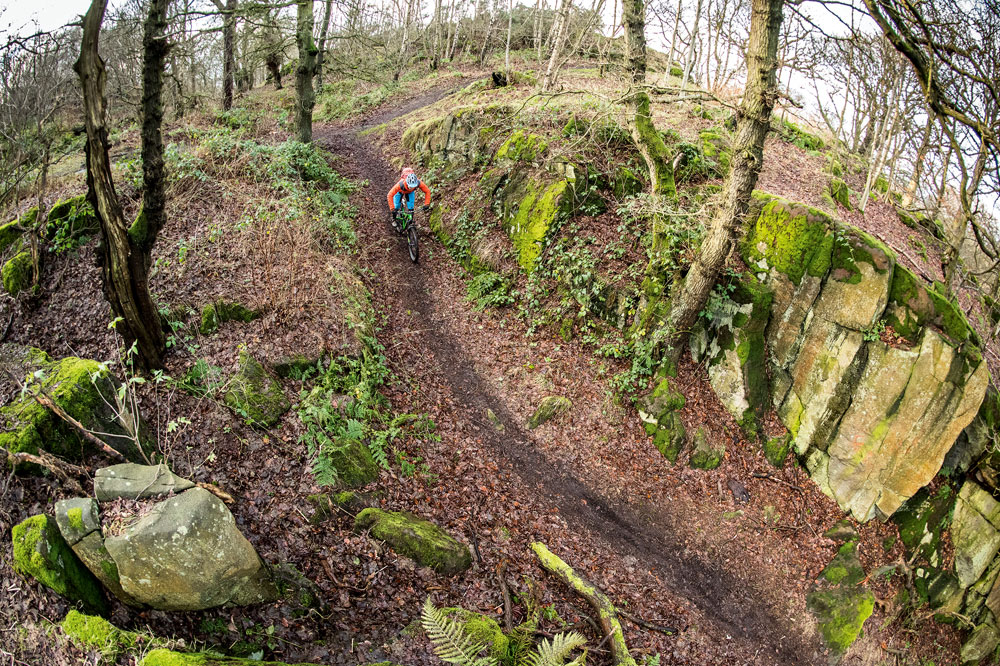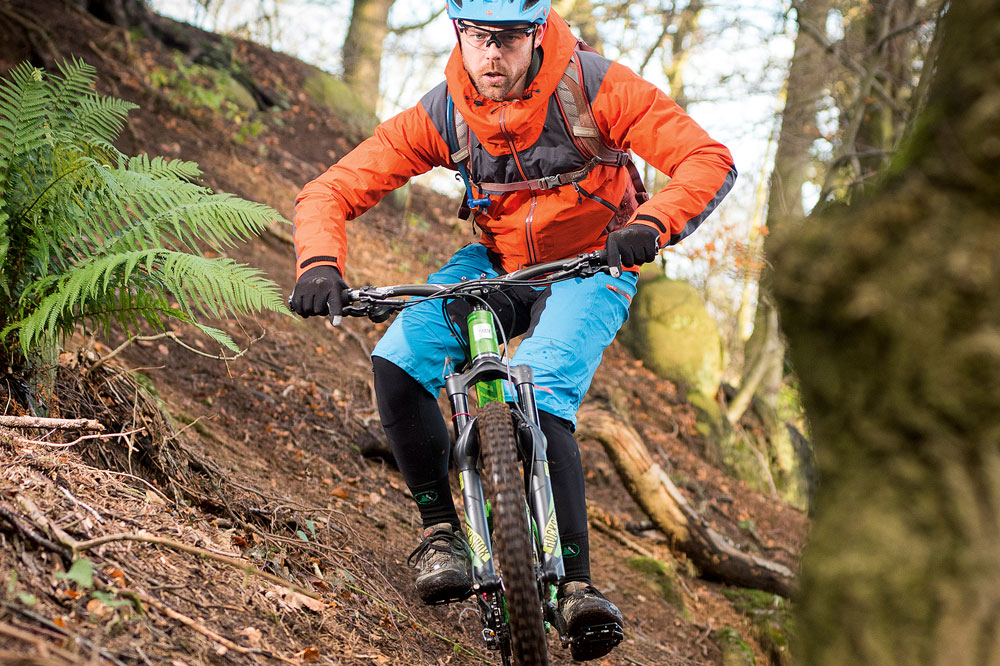Don’t overlook mental training on the trails - control the controllables and you’ll ride faster
To continue our riding technique series, we’re going to look at the other side of riding — the mental attitude you bring to the trails.
With this article we go from technical to tactical.
We’ll look at how being neat and tidy is often the fastest, how being honest with yourself about where your weaknesses lie can be a huge advantage, and how concentrating on the things that are within your control can allow you to forget about the things that aren’t.
>>> How to find traction on technical trails

There are many aspects of your riding that are under your control. Even simple things like being prepared for a ride can make a huge difference
Control the controllables
There are certain things that are within your control and there are certain things that aren’t. Obviously, you can influence things under your control, but not those that aren’t. It’s that simple really. Yet, somehow we all get wrapped up in the things that we have absolutely no influence over and overlook the most basic things that we can control.
The weather for example, or what other people are doing; you’re never going to be able to change either of those, so why spend any time worrying about them? On the other hand, your tyre choice, where you brake, what shape you make when you stand up over technical terrain, what you’re looking at… all these are things that are well within your ability to change.
>>> How to ride flat pedals properly
Having a positive outlook will be a huge advantage when things don’t go your way. If it starts raining and you have the opportunity, why not fit a grippier front tyre and a mudguard? After all, you have no control over the rain, but you do have control over how your bike is set up. If you don’t have the time to change anything, then don’t worry about it. The game’s moved on — just accept it.
All you can do is brake where it’s safe and keep an aggressive neutral riding position when it gets loose. While all your mates are complaining about how sunny it was yesterday, you’ll be sliding around with a massive grin on your face safe in the knowledge that you’re doing your Dirt School homework.

Know yourself and you can play to your strengths
Know your limits
This might initially sound like a negative way of looking at your ability but the complete opposite is true. Once you work out your strengths and weaknesses, you can protect your weaknesses and play to your strengths.
For example, if you’re a fit rider then you probably think you can pedal everywhere and you’ll be able to keep up with the better riders. What you won’t see is that you’ve just lost your advantage.
If you can get through the more technical terrain smoothly and without using up too much energy, then you can use your legs to do some serious damage once you get out on to some open ground.
>>> How to build core strength for mountain biking
If you’re using all your energy to catch up out of every corner then you’re going to have nothing left when you need it. Going five seconds slower through something technical is worth it if you can make up 15 the next time you pedal.
If you apply this in a race setting, or even just riding with your mates at the weekend, then you’ll be able to close gaps with other riders on all the bits that suit your skillset, rather than tiring yourself out and having no advantage anywhere.
Perceived exertion
This is fancy talk for how hard it feels like you’re trying. Put it this way; if you’re leaving your braking as late as possible, sliding in to all the turns, and pedaling as hard as you can out the other side, then you’re going fast right?
>>> How to combat instability on your mountain bike
While this might feel fast, in reality you’re haemorrhaging time and energy. Keep this style of riding up for a few minutes and you’ll be so tired that, even though it feels like you’re giving 100 per cent, your output has probably dropped well below.
The more technical a trail the more you have to back off. Remember — going fast is all about having confidence through control. The most satisfying runs are also the smoothest. If you do lose control, it should feel like you have ample time to correct it, then you get back into the rhythm of riding smooth again.
If you have the maturity to ride like this, and carry speed with it, then you’ll be the one leaving everyone for dead. It shouldn’t feel frantic; it should feel like you have control.

There are some things that are beyond your control, but how you choose to react to them can make all the difference
Neat and tidy
The aim of the game over the technical stuff is to be as clean and as smooth as you can. If you’re just slamming into things, and feeling like you’re rushing, then you’re never actually practising anything positive.
You have to back off and put the time into riding smoothly to make any progress. We actually get our racers to colour-code trails when they’re competing, so that they have a different perceived exertion on different parts of the track.
They deliberately ride some sections smooth and other sections as fast as they can. If you’re trying to go fast everywhere, then it’s only a matter of time before you crash, stall, or wear yourself out.
There are some things that are beyond your control, but how you choose to react to them can make all the difference.
>>> How to get in the zone to ride smoother and faster

Here Andy comes in to an off-camber section and deliberately applies the angulation technique to feel like he’s got more time to react
Purposeful practice
It’s widely accepted now that there isn’t really such a thing as talent. Some people are born with certain body types, or given certain opportunities in life, but nobody is born a natural golfer, musician, or mountain biker. It takes a lot of practice to become good at anything.
If there is an innate ‘talent’ then it’s probably in having the patience to be able to practise something till you’ve got it right. Some people are just obsessive about things like this, and given the right circumstances, they’re the ones that become ‘talented’. Anyone can do this though — you just have to be willing to practise with purpose.
>>> How to ride a modern trail bike
If you’re braking in corners every time you go for a ride, then all you’re getting better at doing is braking in corners. If you can come into the same corner with what you want to practise in mind, then you’ll do all your braking before hand, make a good body position, look where you want to go, and exit with control… but you have to want to do that on the approach.
Purposeful practice means that every time you go for a ride, you should be working on something. No matter what it is. By the end of the ride you should feel like you’ve made a bit of progress — even if that progress is to have caught yourself doing it wrong! At least now you know where to improve.

Practise a skill every ride and reap the rewards forever
There’s an app for that!
Dirt School’s coaching app lets you see the right and wrong techniques in slo-mo.
Homework
Have a look through the previous articles and pick two or three things that you feel apply to you. The next time you’re standing at the top of a trail, have a think about what it is that you’re trying to get better at.
If possible, ride the same trail more than once. It’ll take a run to feel comfortable and notice where you’re going wrong. The next time down, try and think about what you’re doing on the way in to the same sections, and apply what you already know to your technique.
>>> How to practice your trail skills on the streets
There’s a reason downhillers, BMXers and dirt jumpers are good at what they do. It’s because they practise the same things, over-and-over, till they have them dialled.
If you can get into the same mindset when you ride, then you’ll notice the same progression every time you head out.




